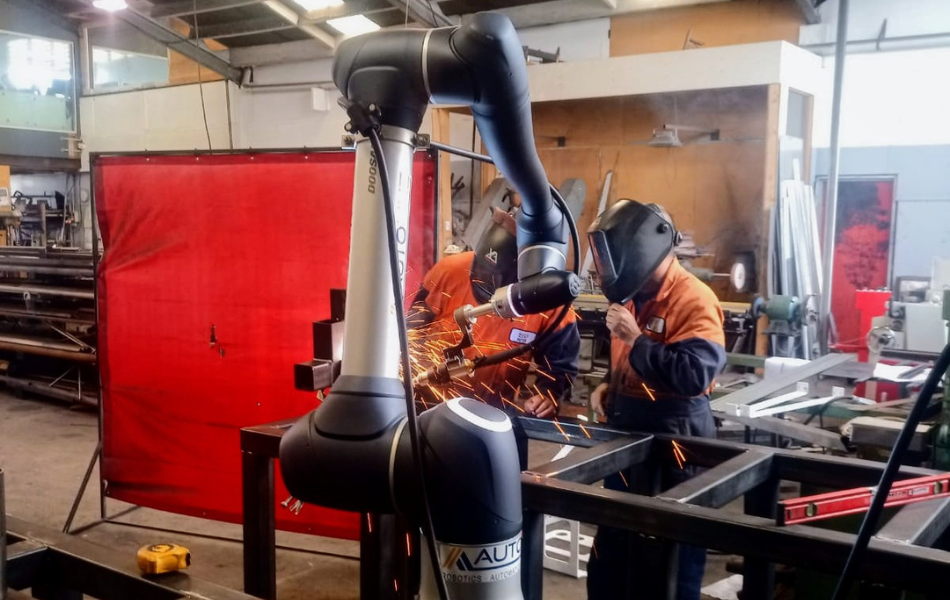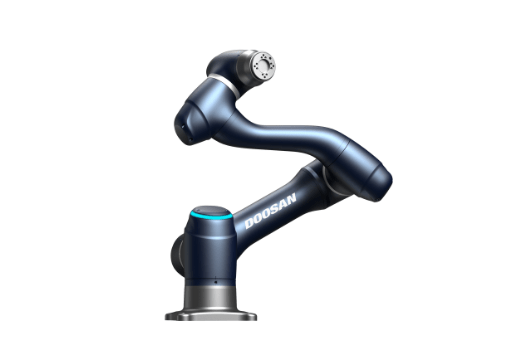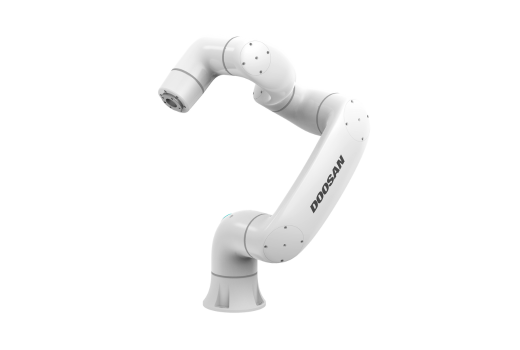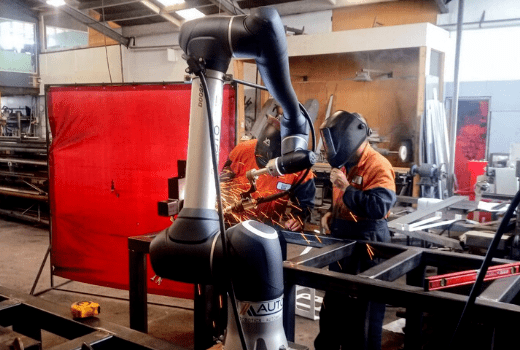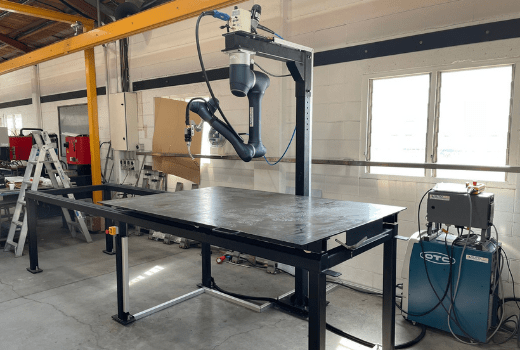Collaborative robot welding, also known as cobot welding, is a manufacturing process that involves the use of specialised robots designed to work alongside human operators in a shared workspace. Unlike traditional industrial robots that are typically housed in safety cages and operate independently, collaborative robots are equipped with advanced sensors and safety features that enable them to safely interact with humans.
In collaborative robot welding, these robots are programmed to perform welding tasks with a high level of precision and accuracy, while human workers can focus on more complex or delicate aspects of the process. The robots are designed to be intuitive and user-friendly, allowing for easy programming and quick deployment. This collaborative approach not only enhances the efficiency of the welding process but also minimizes the risk of workplace injuries and fatigue associated with manual welding.
Overall, collaborative robot welding represents a significant advancement in manufacturing technology, offering a harmonious blend of human expertise and robotic precision to achieve optimal results in welding applications.
COBOT Welding BY AUTOLINE
Autoline is at the forefront of Collaborative Robot Welding in New Zealand, specialising in integrating top robot brands and cutting-edge welding technologies for the manufacturing industry. Manual welding, a physically demanding process that often results in repetitive motion injuries, can now be seamlessly transformed with today’s advanced technology into collaborative robot automation. Investing in a collaborative robot welding empowers manufacturers to effectively combat labor shortages, fulfill rising production demands, and consistently achieve top-tier weld quality.
Our adaptable systems cater to a wide range of welding needs, whether you require heavy-duty welding or precision work on smaller components, including MIG or Aluminium welding. Autoline’s collaborative robot welding solutions offer the perfect synergy of human expertise and robotic precision, ensuring optimal efficiency and safety in your welding operations.
COBOT VS INDUSTRIAL ROBOT WELDING
Collaborative Robot Welding offers a paradigm shift in the welding landscape. Unlike Industrial Robot Welding, it prioritizes human-robot collaboration, revolutionising efficiency and safety. Collaborative robots work alongside skilled operators, enhancing productivity without the need for safety enclosures. This dynamic interaction allows for quicker setup, easy reconfiguration, and seamless adaptation to diverse tasks. Moreover, they excel in intricate welds, minimizing errors and rework. In contrast, Industrial Robot Welding often requires extensive safety measures and is better suited for structured, repetitive tasks. By choosing Collaborative Robot Welding, businesses unlock a versatile, agile, and cost-effective welding solution that combines the strengths of both human and machine.

Collaborative Robot Welder
A collaborative robot welder is a cost-effective way to get started with welding automation. It is a flexible solution that allows manufacturers to increase their capability quickly and easily when welding low-volume, high mix components.
Collaborative robots can have humans working alongside them in close proximity unlike industrial robots, although they usually have a lighter load capacities. Still, a collaborative robot is fast and provides perfect accuracy on repeat.
Key Benefits
- Cheaper alternative for companies wanting to automate parts of their production.
- Improves small batch component production.
- Operators can work along side robot during operation.
- Quick and Easy to teach and programme new work pieces.
- Easy set up, can start welding on the first day of installation.
- Mobile and flexible, can be relocated to other workstations in your production.
- Small footprint in workshop.
Industrial Robot Welder
Industrial robots are high performers, increasing production output of four manual welders, whilst also increasing quality and consistency. They are a valuable investment that will reduce production costs for welding companies that deal with high volume production welding, requiring high speed and accuracy.
Unlike collaborative robots, industrial robots do not have integrated safety and they require safety guarding and measures to stop the robot when employees become at risk.
Key Benefits:
- Higher automation percentage.
- Ideal for large batch component production.
- Operators must stay outside the robot’s safety fencing during operation.
- Training robot operators are required to programme new work pieces.
- Set-up and implementation time-consuming.
- Heavy and stationary position in the workshop.
- Takes up space owing to safety guard and large fixtures.
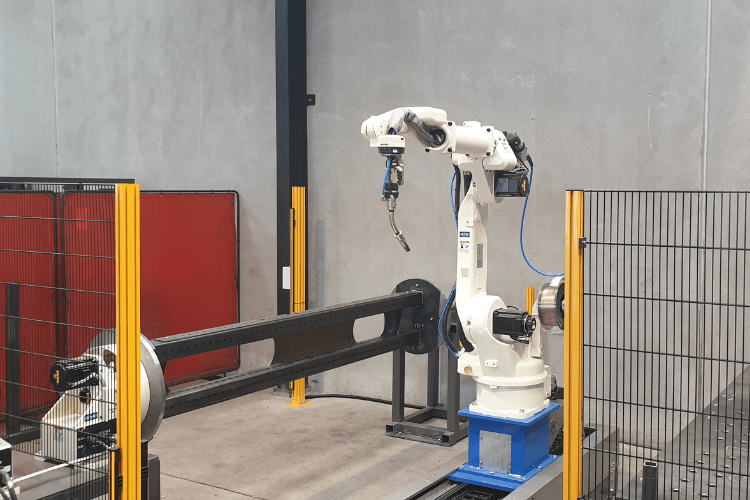
DOOSAN ROBOTICS
Autoline is proud to represent multiple world-leading robotics brands in New Zealand that provide numerous options and systems for robotic welding. Doosan Robotics is a range of collaborative robots that can be applied to robotic welding, providing a flexible automation solution that allows manufacturers to increase production quick and easily.
COBOT WELDING ENQUIRY
Talk to the Robotic Welding Experts at Autoline to discuss your current welding processes and find out how a collaborative robot welding system can help you increase your profitability, giving you a competitive edge in your industry.

